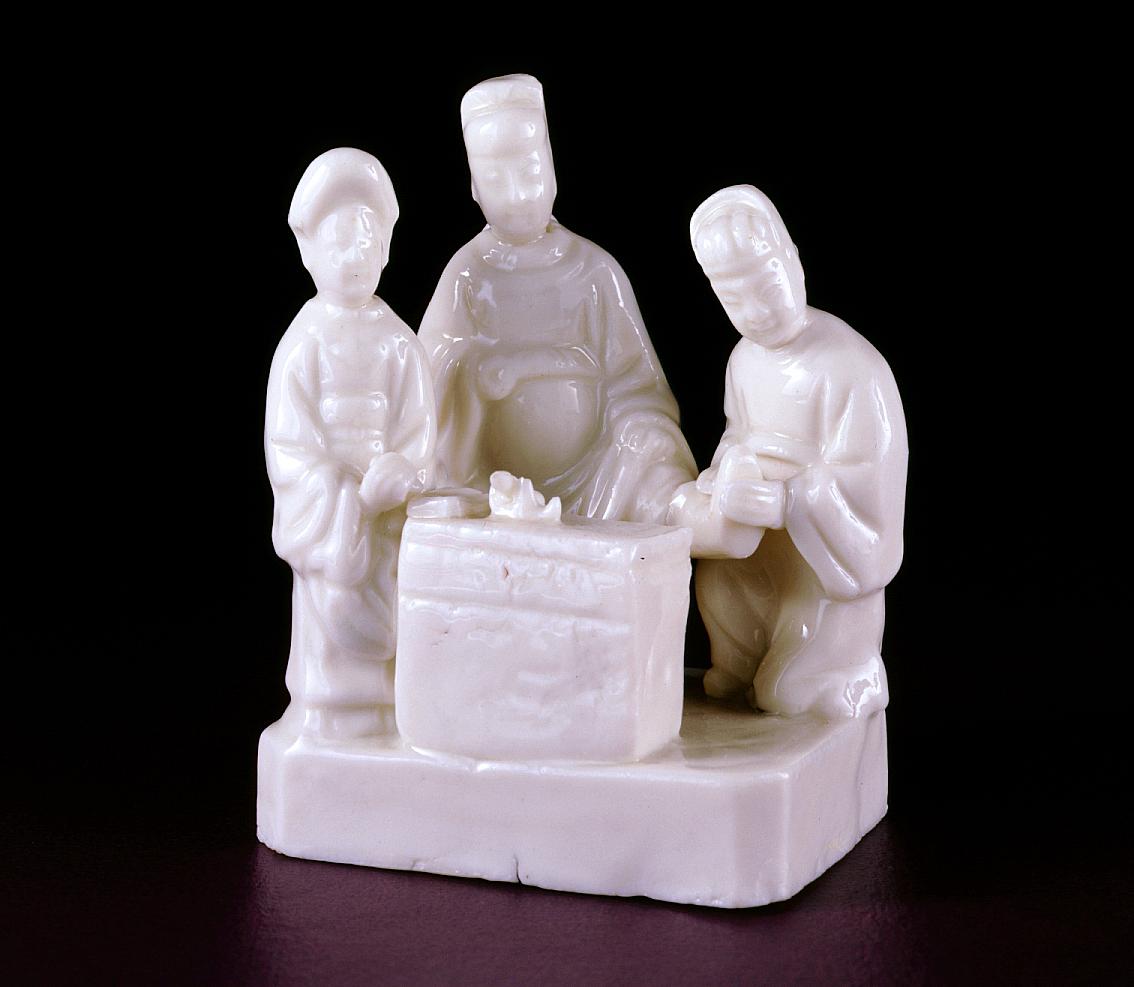
2 minute read
PORCELAINS OF DEHUA From Regional Kilns to Global Markets

Fig. 1. After He Chaozong (Chinese, active ca. 1610 - 1620), Wenchang, God of Literature, early 17th century. Dehua ware; porcelain with transparent glaze, 15 × 6 11/16 × 5 1/4 in. Gift of Ira and Nancy Koger, 2001. SN11122.83
This past March, dozens of Chinese ceramics were installed on the third floor of the Chao Center for Asian Art. These Dehua porcelains, as they are called, take their name from the county in which they were produced, located in the southeastern Chinese province of Fujian. Historically, they have also been known as blanc de Chine, a French term coined in the 19th century meaning “white from China." Indeed, the pieces range from milky white to a warm pinkish hue.
The earliest Dehua wares date to the Song dynasty (960–1279), but the late Ming dynasty (1368–1644) was the golden age of Dehua’s porcelain production, when Fujian province experienced something of an economic boom, and the local ceramic industry flourished. Not only were the wares in high demand at home, but they were also widely exported, especially to Southeast Asia and Europe. The Dehua kilns produced a range of objects with various uses: Buddhist and Daoist icons, taper holders, censers, water droppers, wine pots, ewers, as well as genre scenes and pieces made specifically with the Western market in mind. While some of the pieces are relatively simple and served rather mundane purposes, many are elaborately detailed, testament to the high levels of craftmanship achieved by Dehua potters.
Religious statuettes comprise a large portion of Dehua wares and tend to show one or more figures clad in robes, identifiable by their physical characteristics and accoutrement. An example of one of these icons is a statuette of Wenchang, God of Literature, produced in the early 17th century by renowned figure modeler He Chaozong (fig. 1). Wenchang wears the clothes and cap of a scholar official and holds in his hand a ruyi, a scepter for granting wishes.

Fig. 2 Water dropper in the form of a crab, 17th century. Dehua ware; porcelain with transparent glaze, 1 3/4 x 5 3/4 x 3 3/4 in. Gift of Ira and Nancy Koger, 2001. SN11122.164
Animals were also a favorite subject, and they were often ingeniously incorporated into objects for domestic and scholarly use, like this water dropper in the form of a crab (fig. 2). Animals often came in twos and were sometimes fitted with candle holders. Pairs of roosters and dogs are represented in The Ringling’s collection, as are mythical creatures such as qilin and shishi (guardian lions).

Fig. 3. Poet Li Bai, Yang Guifei, and Gao Lishi , 17th century. Dehua ware; porcelain with transparent glaze, 4 3/8 in. Gift of Ira and Nancy Koger, 2001. SN11122.90
Dehua potters also produced a large number of genre scenes, often depicting popular stories. One such piece shows the Tang-dynasty poet Li Bai, who requests that the high-level court eunuch Gao Lishi remove his muddy boots, while imperial consort Yang Guifei stands in attendance (fig. 3). This may represent a staged account of the story, and its small size suggests it may have been made as a memento for a theatrical production.
The Ringling’s collection of Dehua ceramics is among the largest and most representative in the United States, gifted to the museum in 2001 by Ira and Nancy Koger. Most of the objects on view range in date from the 16th to the 18th centuries, with some pieces of more recent manufacture. While the golden age of Dehua wares may have passed, potters in the county continue to make ceramics of extremely high quality.
The exhibition was curated by Rachel Quist, PhD candidate at The University of Kansas, with contributions from Kyle Mancuso, curatorial research fellow.



